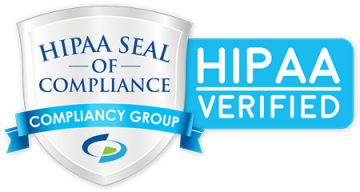Non-Healing Ulcer
Venous ulcers, also referred to as stasis, insufficiency or varicose ulcers, are the result of malfunctioning venous valves causing pressure in the veins to increase. These typically occur along the medial or lateral distal (lower) leg. The resulting venous hypertension causes blood pooling when it is not as efficiently pumped back towards the heart, otherwise known as venous insufficiency. In addition, the increase in pressure stretches the vein walls, allowing proteins in the blood and blood cells to leach resulting in swelling.
The above along with poor oxygenation in turn lead to necrosis and ulceration.
Risk Factors
- Diabetes mellitus
- Congestive heart failure
- Peripheral vascular disease
- Deep vein thrombosis
- Pregnancy
- Obesity
Complications
One of the most typical complications associated with venous insufficiency ulcers is infection of the affected tissue.
Treatment
In addition to treating the superficial wound and edema, the secondary goal in treating venous ulcers is to alleviate the underlying condition. One of the most common treatments is compression therapy , which serves to decrease blood vessel diameter and pressure, increasing effectiveness and in turn preventing venous reflux. The second therapy would be to treat the underlying abnormal veins. This requires an experienced interventional radiologist. Our physician uses ultrasound guided to find and treat the veins with the abnormal veins by means of sclerotherapy or ablation. These methods use heat or medication to close the abnormal veins down.
References
Cleveland Clinic. Leg and Foot Ulcers. Cleveland Clinic. http://my.clevelandclinic.org/heart/disorders/vascular/legfootulcer.aspx. Accessed July 12, 2017.
Gabriel A. Vascular Ulcers. Medscape Reference. http://emedicine.medscape.com/article/1298345-overview. Updated Mar 16, 2016. Accessed July 12, 2017.
Healthwise, Inc. Venous Skin Ulcer – Topic Overview. WebMD. http://www.webmd.com/skin-problems-and-treatments/tc/venous-skin-ulcer-t…. Updated August 21, 2015. Accessed July 12, 2017.
London Health Sciences Centre. Venous Stasis & Arterial Ulcer Comparison. London Health Sciences Centre. http://www.lhsc.on.ca/Health_Professionals/Wound_Care/venous.htm. Updated February 1, 2009. Accessed July 12, 2017.
Ngan V. Leg ulcers. DermNet NZ. http://dermnetnz.org/site-age-specific/leg-ulcers.html. Accessed July 12, 2017.
Takahashi P. Chronic Ischemic, Venous, and Neuropathic Ulcers in Long-Term Care. Annals of Long-Term Care. http://www.annalsoflongtermcare.com/article/5980. Published September 5, 2008. Accessed July 12, 2017.
The above information is not all inclusive of the risks, alternatives and benefits. It is not meant to be a substitute for informed discussion between you and your doctor, but can act as a starting point for such a discussion. There are complications possible with any medical procedure. Overall, minimally invasive procedures have a lower complication rate than open surgeries.




